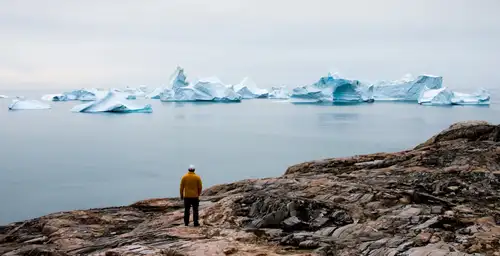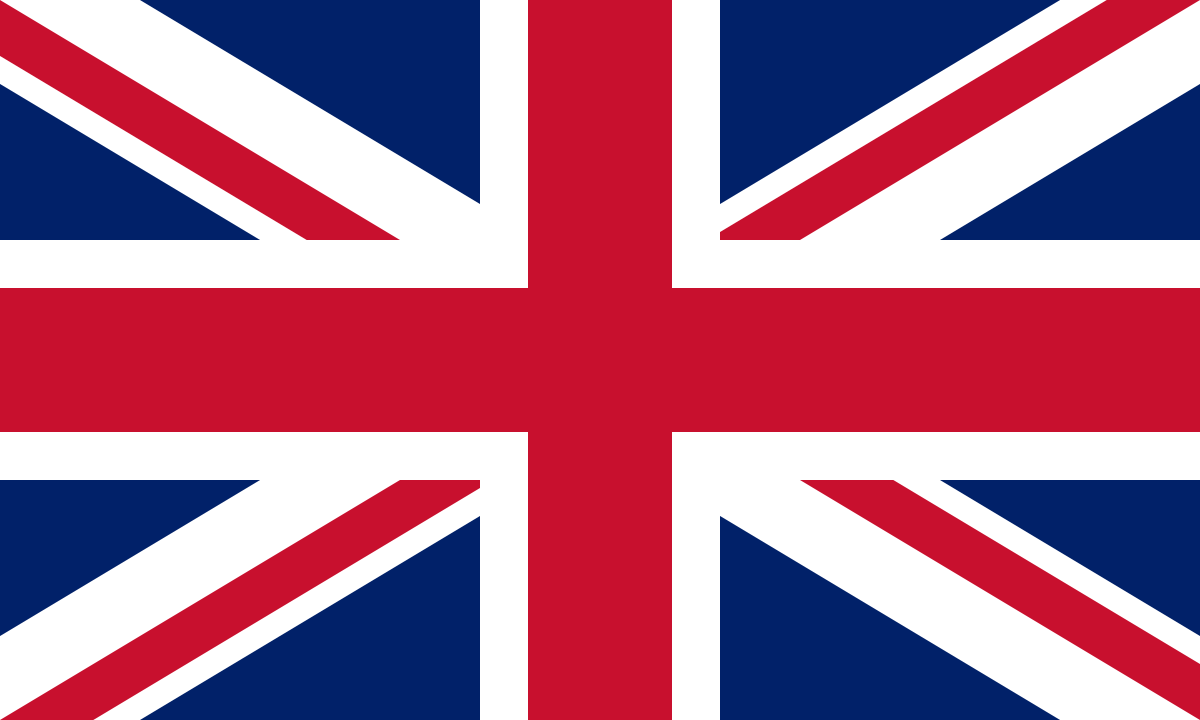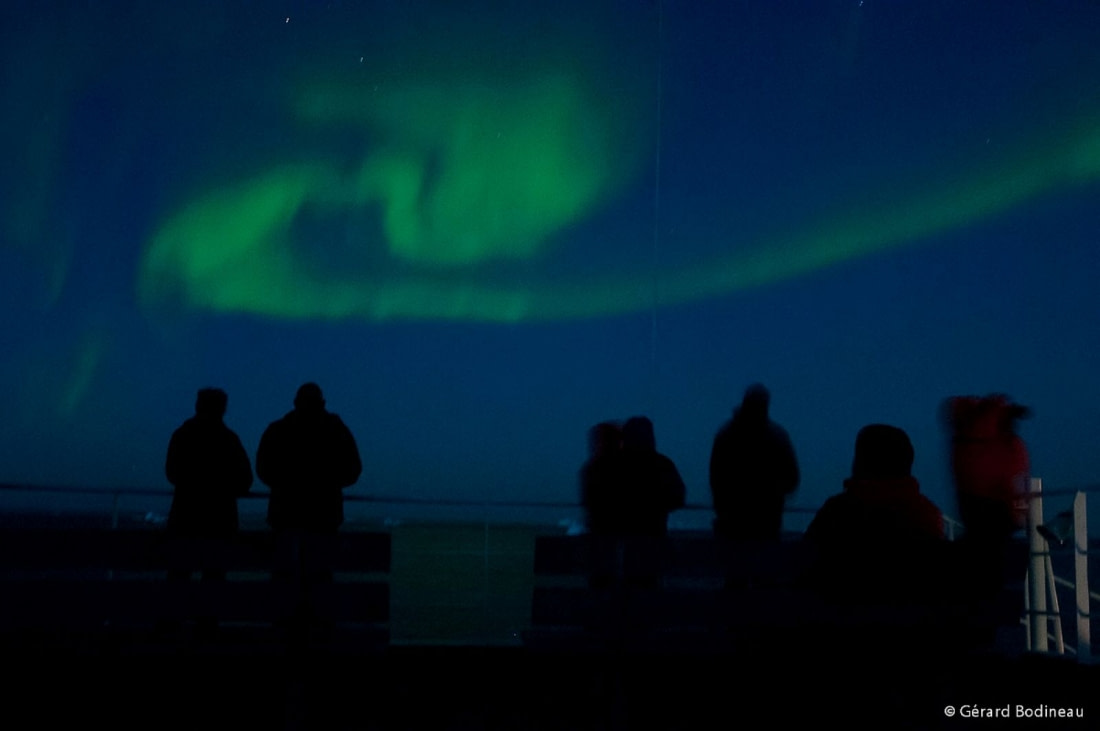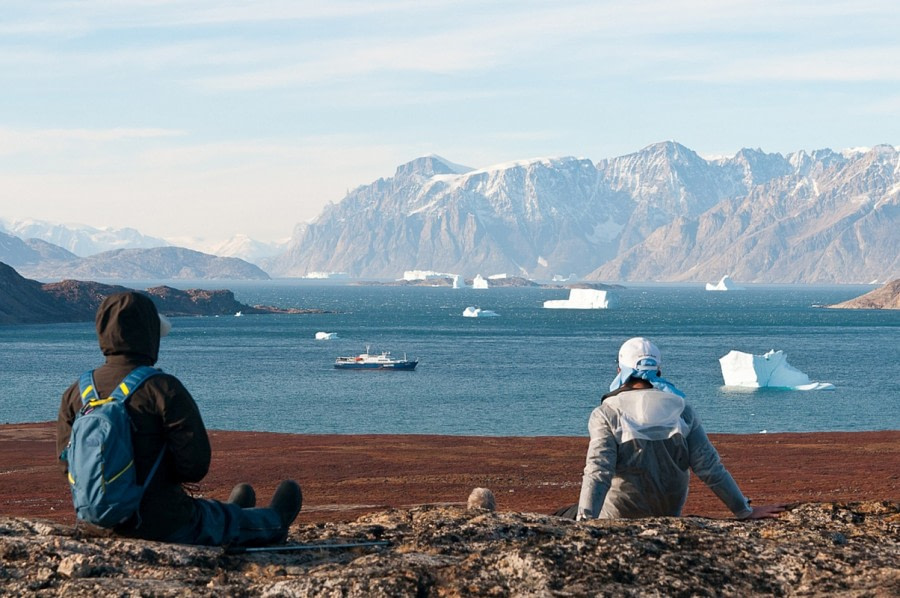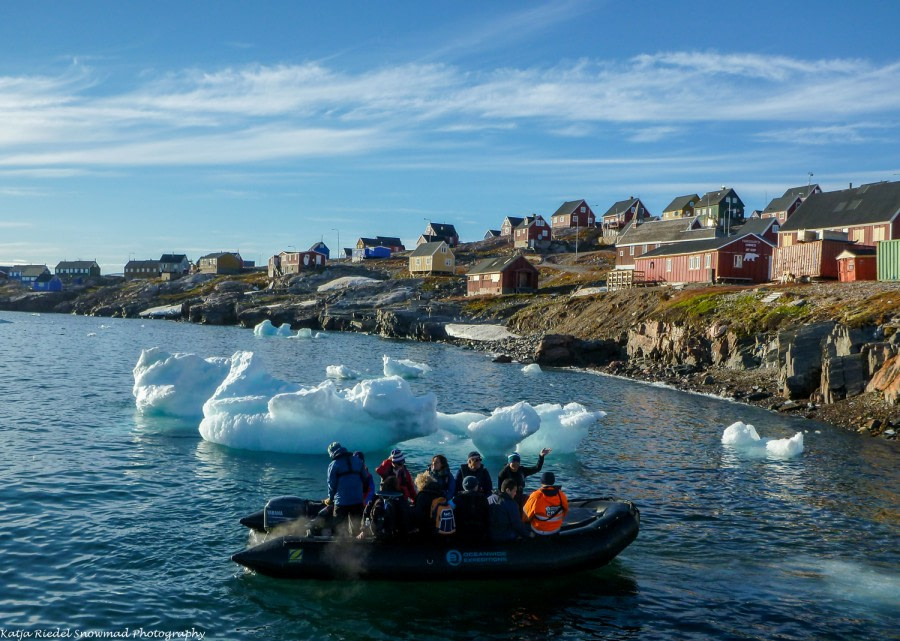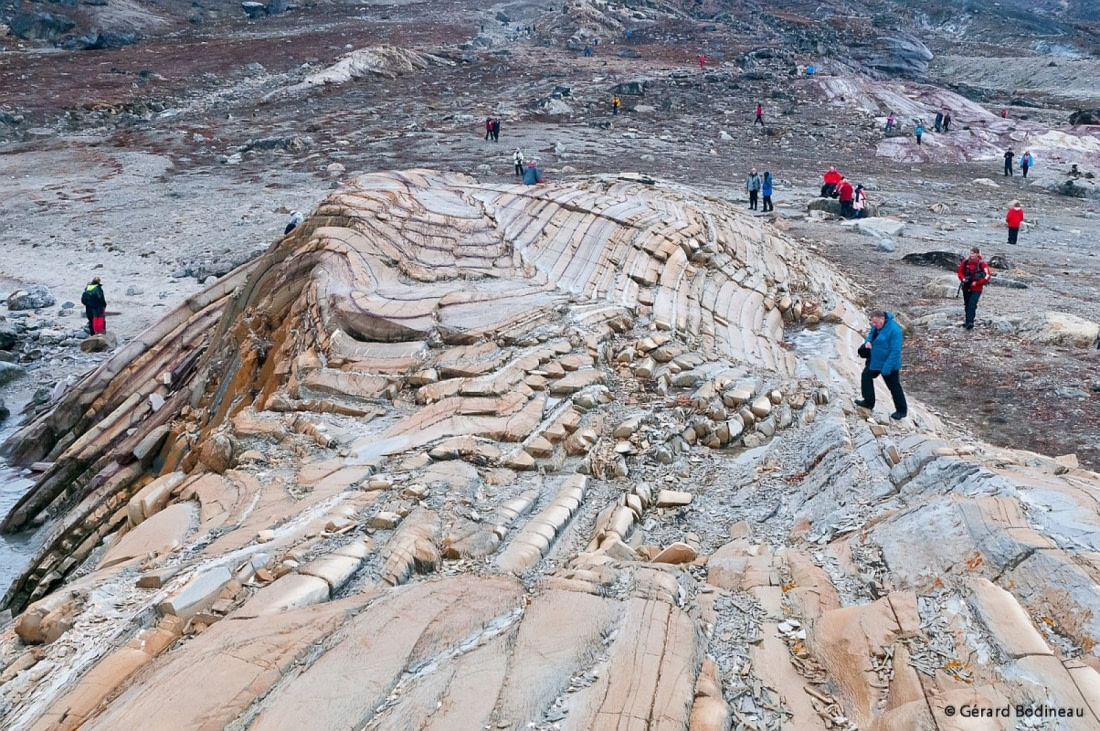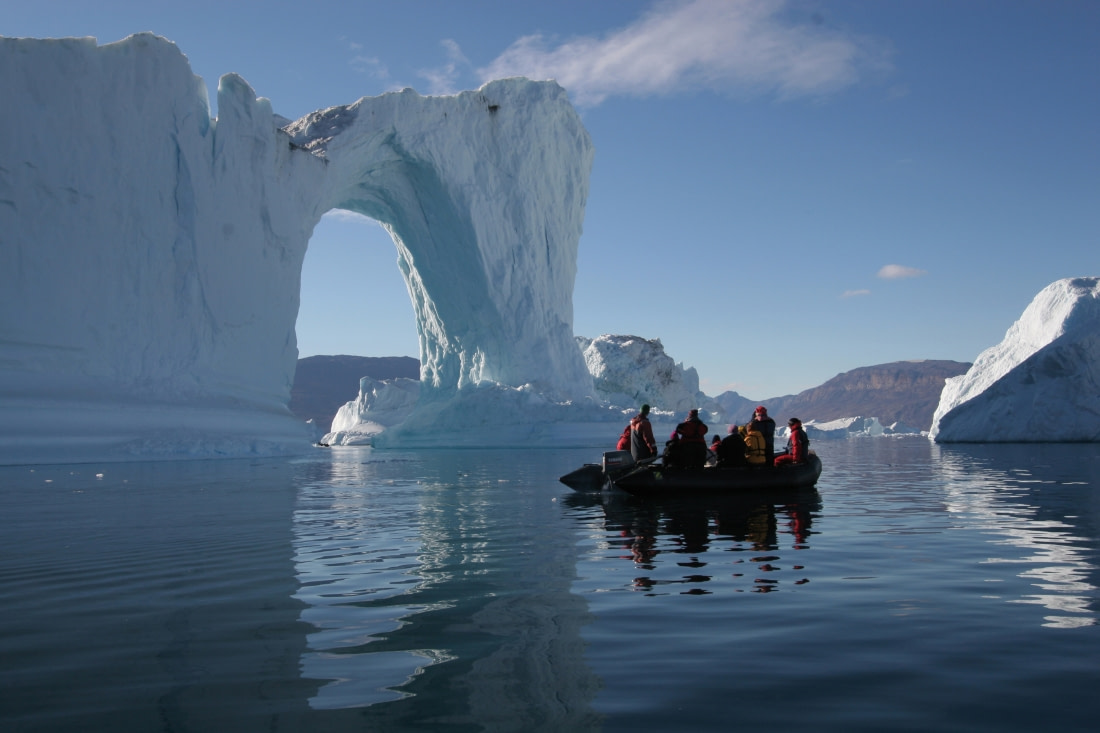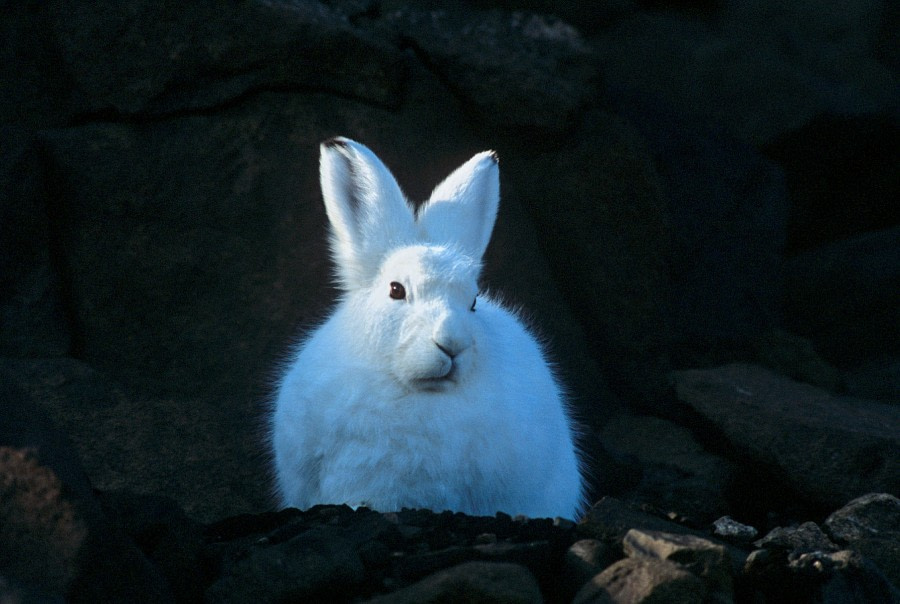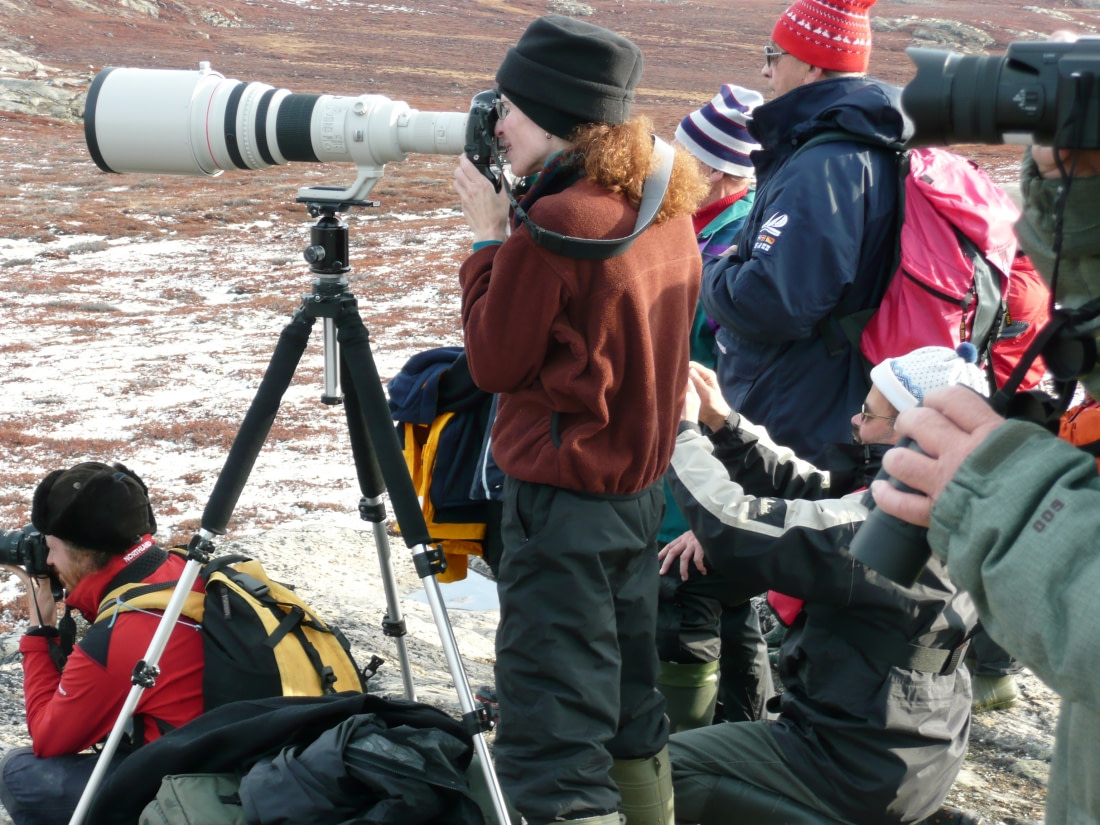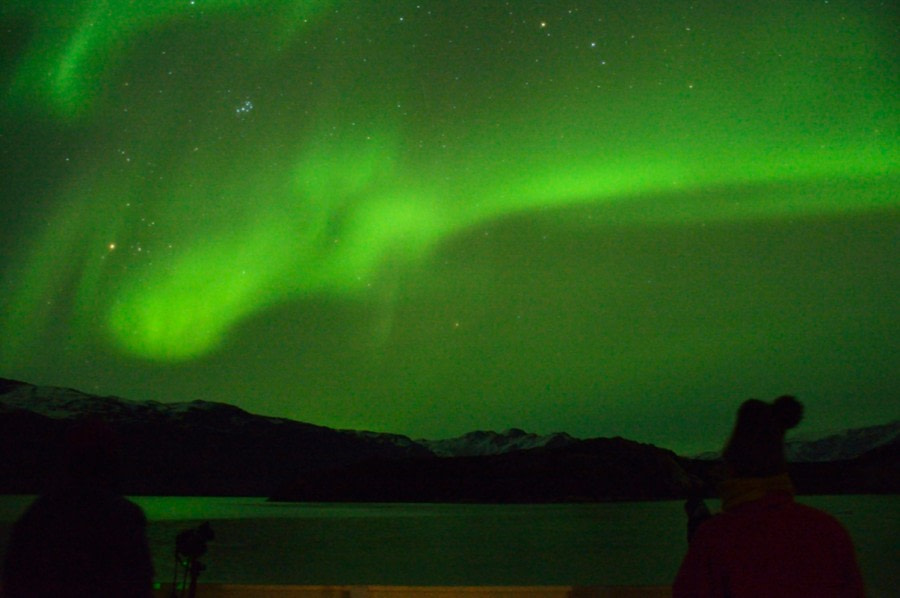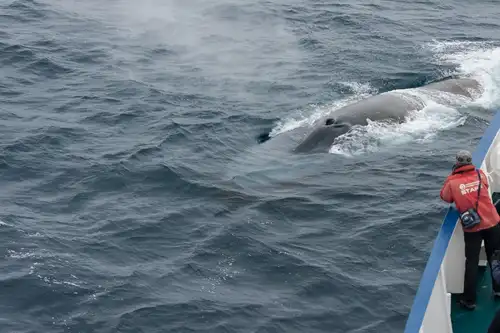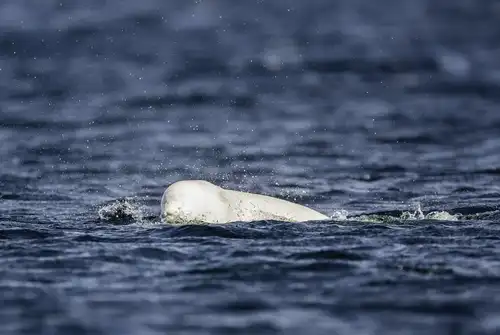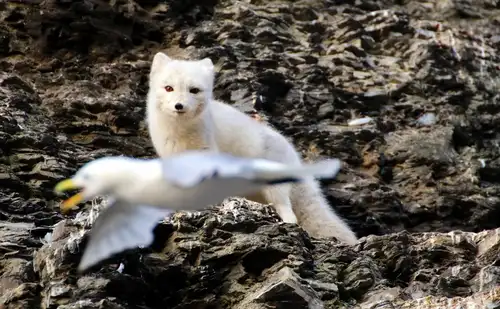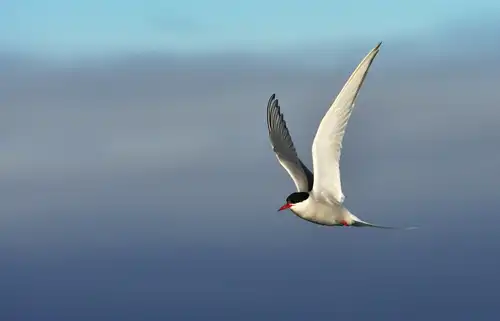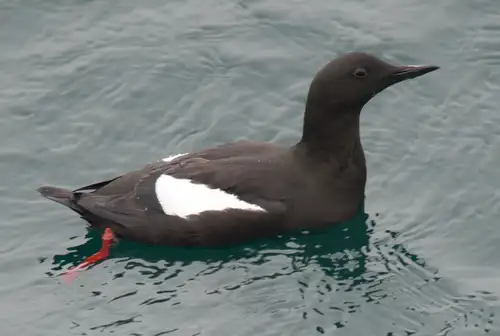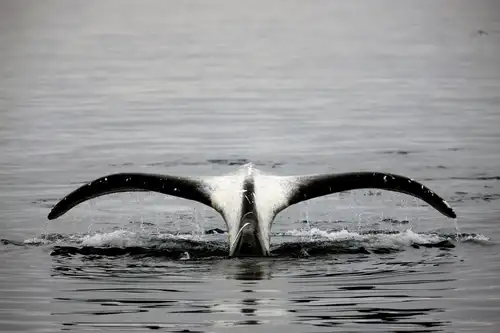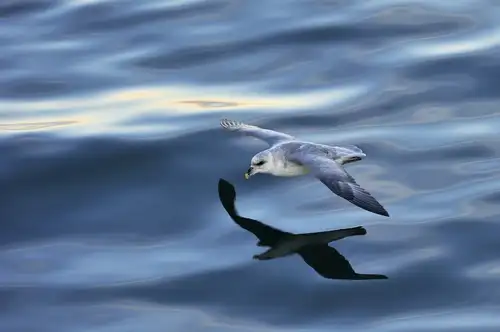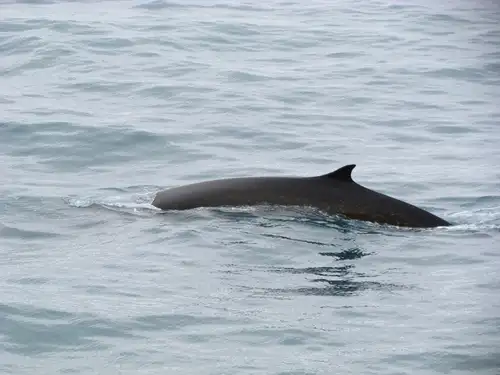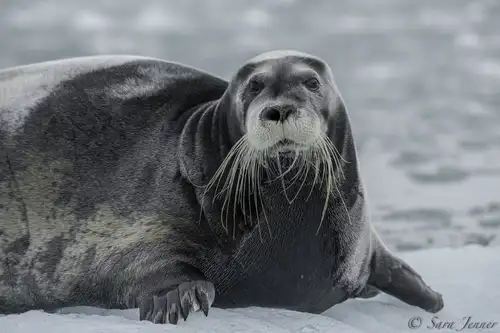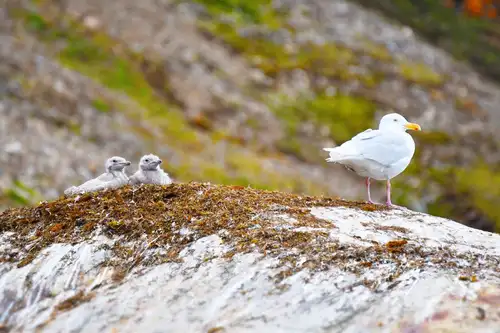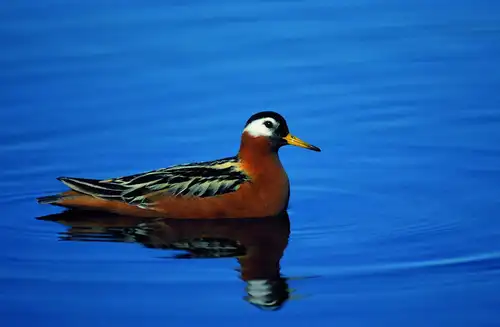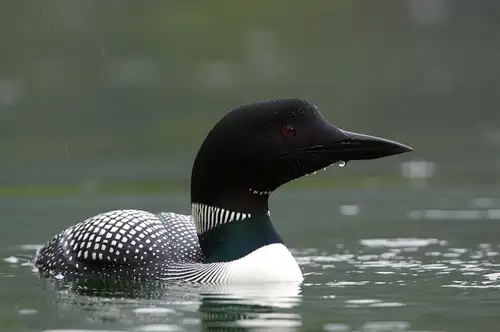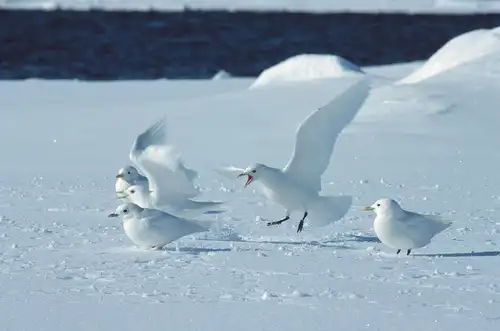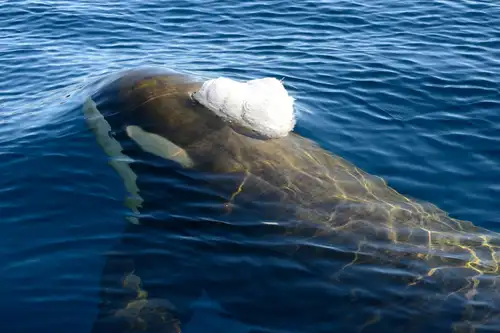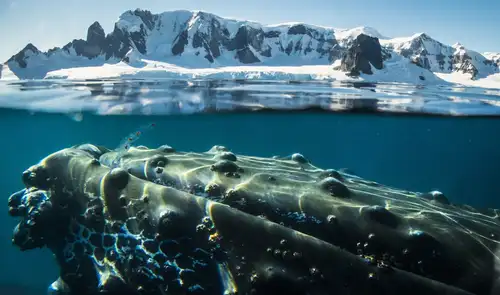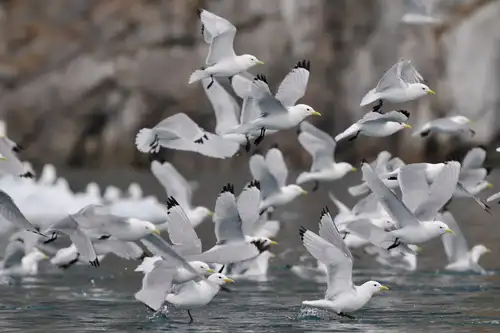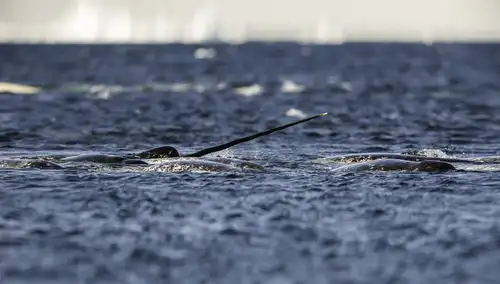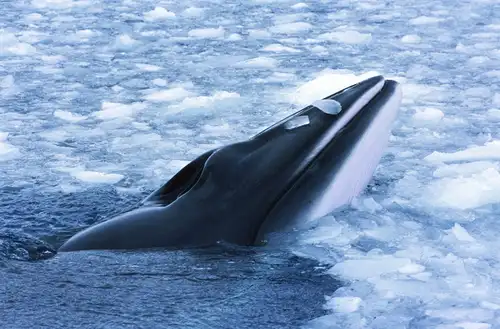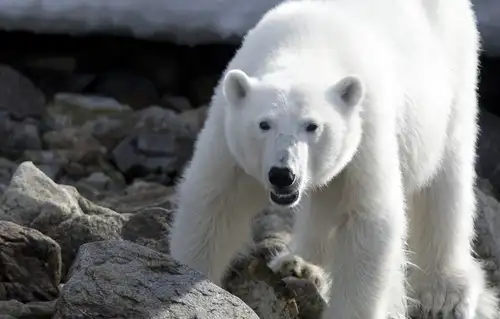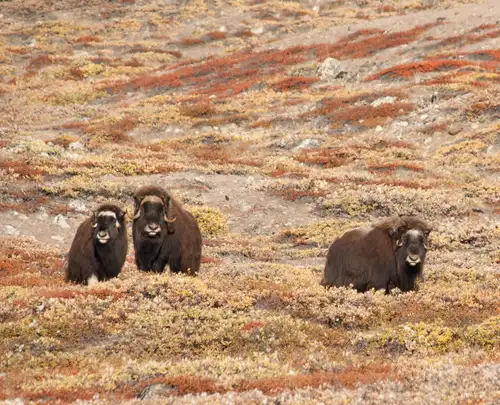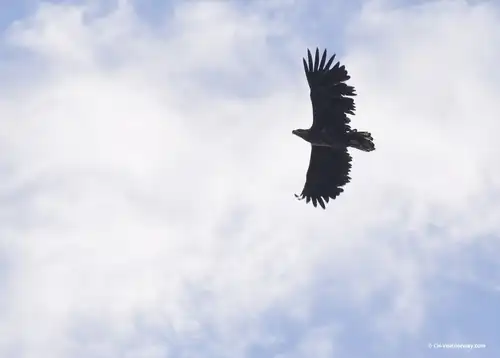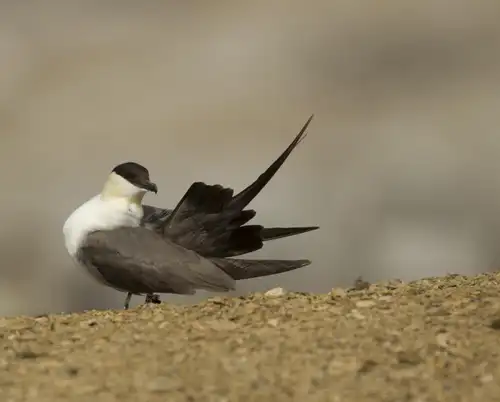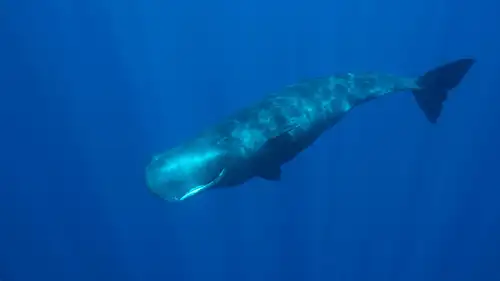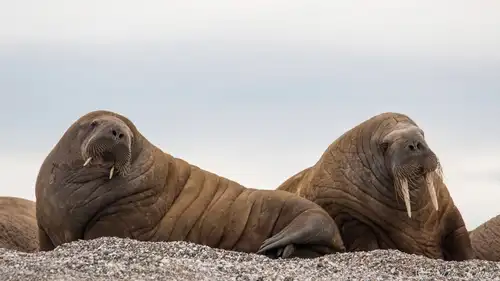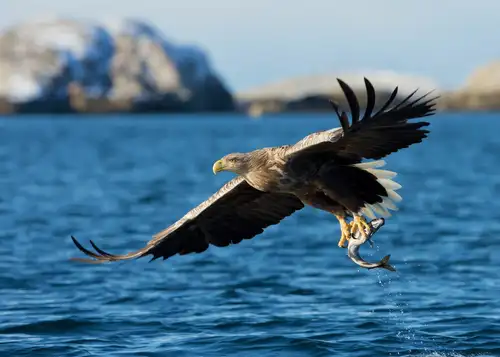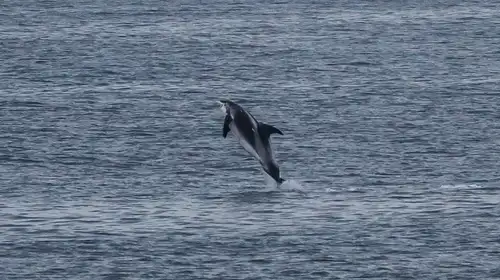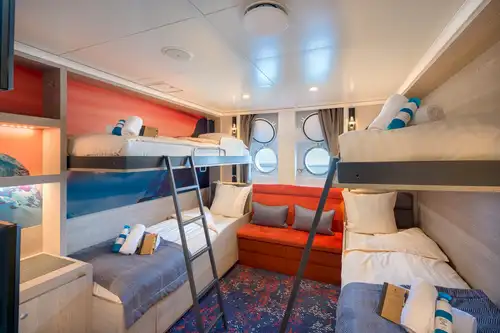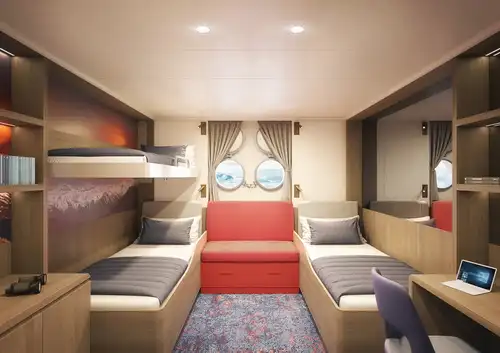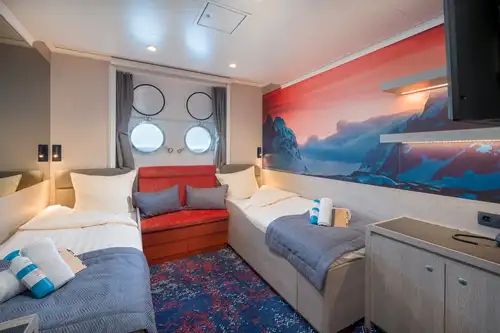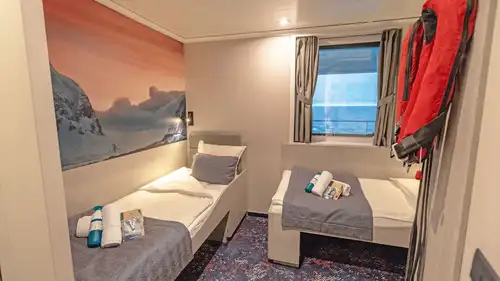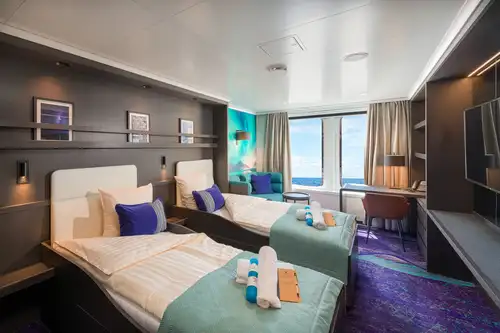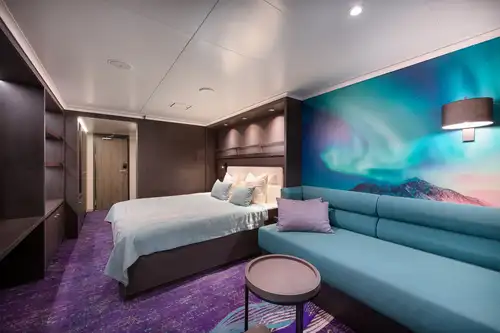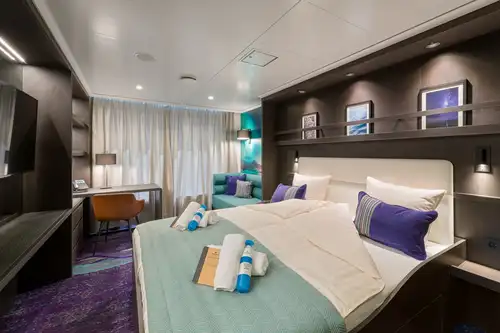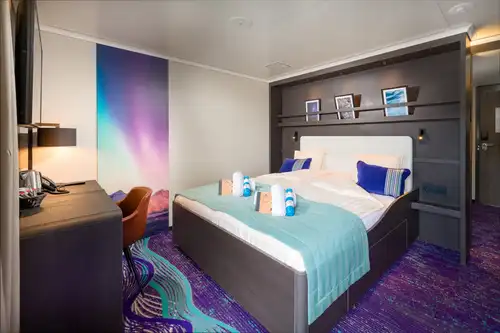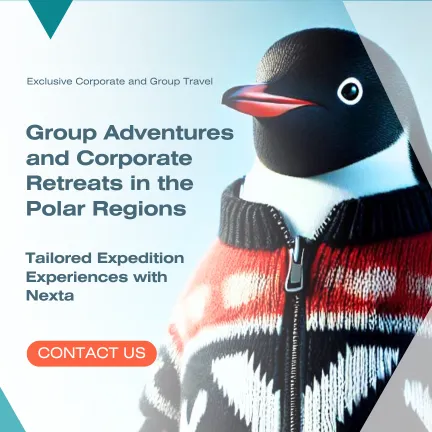
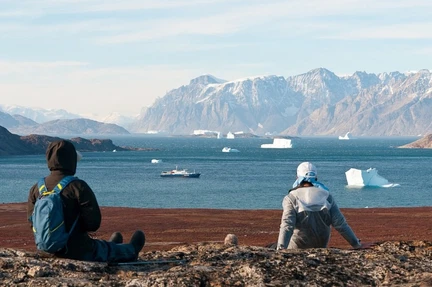
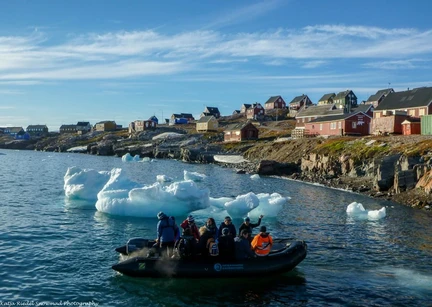
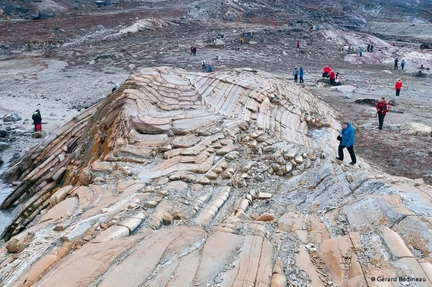
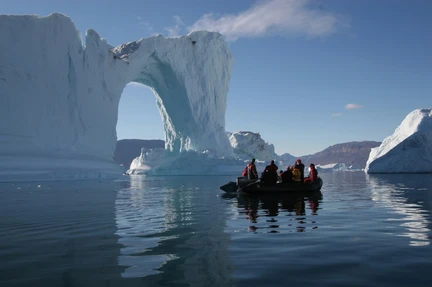
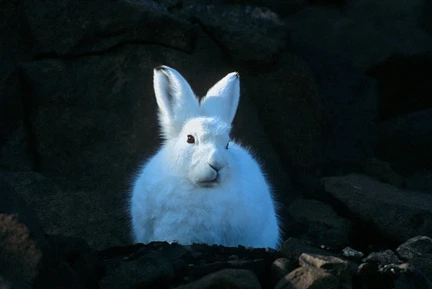
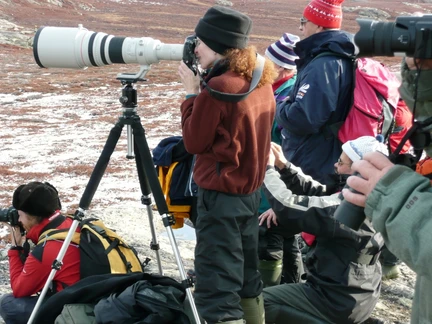
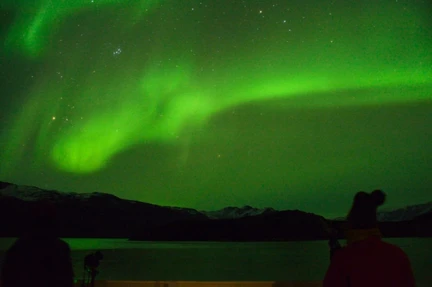









































 14 Days/13 Nights
14 Days/13 Nights




Arrive in Longyearbyen, the main town of Spitsbergen. Explore this former mining town with its church and museum. In the evening, the ship sets sail, and you might see a minke whale.
Heading to Greenland
We cruise toward Greenland, encountering seabirds and whales. The sea can be dramatic, adding to the adventure.
Sea Ice and Wildlife
As we sail west, watch for the sea ice and keep an eye out for whales, seabirds, seals, and possibly polar bears.
Exploring Isle de France
If conditions allow, we land at Isle de France to see historical sites with an archeologist. If not, we explore the ice or Germania Land, home to musk oxen and sometimes wolves.
Dove Bugt Landings
We may land on Germania Land's south coast or at Store Koldewey, exploring areas named by past expeditions.
Historic Sites and Aurora
Visit Sabine Island and Germaniahavn, where walruses are returning. As we sail south, nights get darker, offering chances to see the Northern Lights.
Inuit History
On Clavering Island, we hope to land near Eskimonaes, where Europeans once met local Inuit. Remains of their culture are visible.
Tundra and Icebergs
We may land at Margrethedal to see Thule culture remains and musk oxen. Sail through Sophia Sund, surrounded by mountains.
Alpine Views
Explore Segelsällskapets Fjord and its ancient formations. Hike to see musk oxen, Arctic hares, and ptarmigans. Alternatively, visit Blomsterdal for more wildlife.
Ittoqqortoormiit Visit
Stop at Ittoqqortoormiit, a small settlement. Visit the post office or see sled dogs and drying skins. If time permits, explore a nearby lagoon.
Icebergs and Wildlife
Encounter massive icebergs and land near Sydkap for views and wildlife. Walk along the shore to see historical sites. Sail south by Kap Brewster.
Leaving Greenland
Sail by Milne Land's coast, seeing icebergs and possibly polar bears. Enjoy a Zodiac cruise past glacier fronts before leaving Greenland.
Sea Life and Northern Lights
Cruise south, observing sea life in the mixing waters. At night, watch for the Northern Lights.
Journey's End in Akureyri
Disembark in Akureyri. You can transfer by bus to Reykjavík if booked in advance.





























































































m/v Hondius
Hondius is the world’s first-registered Polar Class 6 vessel and was built from the ground up for expedition cruising.

Specifications
| Passengers: | 170 in 80 cabins |
| Staff & crew: | Crew 57 | Guides 13 | Doctor 1 |
| Length: | 107.6 meters |
| Breadth: | 17.6 meters |
| Draft: | 5.30 meters |
| Ice class: | Polar Class 6 (equivalent 1A-Super) |
| Displacement: | 5,590 tonnes |
| Propulsion: | 2 x ABC main engines; total 4,200 kW |
| Speed: | 15 knots |
Cabins Gallery


Ship Interior Gallery


Ship Exterior Gallery


Hondius is the first-registered Polar Class 6 vessel in the world, meeting the latest and highest Lloyd’s Register standards for ice-strengthened cruise ships. Surpassing the requirements of the Polar Code adopted by the International Maritime Organization (IMO), Hondius represents the most flexible, advanced, innovative touring vessel in the polar regions, thoroughly optimized for exploratory voyages that provide you the utmost first-hand contact with the Arctic and Antarctica.
Happier polar passengers, healthier polar environment
Not only will the numerous amenities and on-board entertainments help make your Hondius voyage truly memorable, this ship also gives you the peace of mind that comes with choosing one of the most environmentally friendly vessel on the polar seas.
Hondius uses LED lighting, steam heating, bio-degradable paints and lubricants, and state-of-the-art power management systems that keep fuel consumption and CO2 levels minimal. This means that when you sail aboard Hondius, you get to enjoy the exotic landscapes and wildlife as much as possible while impacting them as little as possible.
Hotel comfort, expedition class
Please be aware that a small number of cabins may have a partially obstructed view due to the size of the windows and the design requirements of the ship. For example, some windows may be partly obstructed in the lower half by a gangway.
The best view is always on the outer deck or the bridge. Hondius offers high-quality accommodation for 170 passengers in six grand suites with balconies (27 square meters, 291 square feet), eight junior suites (19 to 20 square meters, 205 to 215 square feet), eight superior cabins (20 to 21 square meters, 215 to 226 square feet), 11 twin deluxe cabins, (19 to 21 square meters, 205 to 226 square feet), 14 twin window cabins (12 to 14 square meters, 129 to 151 square feet) as well as 27 twin porthole cabins, two triple porthole cabins, and four quadruple porthole cabins that vary in size from 12 to 18 square meters, or 129 to 194 square feet.
One deck consists of a large observation lounge and a separate lecture room, which are reserved for a wide variety of interactive workshops, exhibitions, and performances particular to Hondius.
Swift & safe ship-to-shore operations
It is our philosophy to keep sea time short so that we can focus instead on fast, effective access to shore and near-shore activities. To give you the maximum contact with the nature and wildlife you traveled so far to see, we employ a tough fleet of rigid-hull inflatable Zodiac boats that guarantee swift and safe landing operations for the passengers. Hondius has two separate gangways and a sheltered indoor Zodiac boarding area that can also be used for special outdoor activities, such as kayaking.
Age and nationality
Passengers on a typical voyage range from in their 30s to their 80s, with the majority usually between 45 ― 65. Our expeditions attract independent travelers from around the globe who are characterized by a strong interest in exploring remote regions. The camaraderie that develops on board is an important part of the Oceanwide experience, and many passenger groups include several nationalities.
What to wear
In keeping with the spirit of the expedition, dress on board is informal. Bring casual and comfortable clothing for all activities, and keep in mind that much of the scenery can be appreciated from the deck ― which can be slippery. Bring sturdy shoes with no-slip soles, and make sure your parka is never far away in case one of our crew shouts “Whales!” over the loudspeaker and you have to dash outside at a moment’s notice. Opt for layers, as it is comfortably warm aboard the ship though often cold on deck.
How to pay
Refreshments and souvenirs will be charged to your cabin. The day before departure you can settle your bill with the hotel manager, paying by credit card (Visa or MasterCard) or cash (euro, or in some cases dollar). We cannot, however, accept checks. Though the prices and standard currency on board is in the euro, other currencies may be accepted at the discretion of the hotel manager, at prevailing rates.
Electric current
The electrical supply aboard ship is 220v, 60Hz. Electrical outlets are standard European with two thick round pins, so some passengers may need a 220v/110v converter.
Gratuities
The customary gratuity to the ship’s service personnel is made as a blanket contribution at the end of the voyage and is divided among the crew. Tipping is a personal matter, and the amount you wish to give is at your sole discretion. As a generally accepted guideline, we suggest 8 ― 10 euros per passenger per day. It is better for the crew if you give cash.
Non-smoking policy
We have a non-smoking policy inside all our vessels, though you can smoke in certain designated areas. We ask that you please respect the wishes of non-smokers.
Your physical condition
You must be in good overall health and be able to walk several hours per day. The expedition is ship-based and physically not very demanding, but we spend as much time as possible on shore. You are, however, welcome to remain aboard the ship if you prefer. To join most excursions you must be able to get up and down the steep gangway ― from the ship to the water level ― to board the Zodiacs. Staff will assist you in and out of the boats, and boarding will become progressively easier with practice, but conditions on shore can be slippery and rocky. Remember, you will be traveling in remote areas without access to sophisticated medical facilities, so you must not join this expedition if you have a life-threatening condition or need daily medical treatment.

The average price for flights (round trip) to Longyearbyen
From Jakarta: $860
From Singapore: $976
From Kuala Lumpur: $886
Insurance Requirements:
- Mandatory Insurance: All travelers must have insurance covering medical expenses, accidents, and repatriation/evacuation.
- Recommended Insurance: It is strongly recommended to include cancellation insurance for added protection.
Drone Usage Policy:
- Prohibited: The use of drones is strictly prohibited during the expedition.
Clothing and Gear Recommendations:
- Water-resistant coat and Pants: Essential for protection against wet and windy conditions.
- Layered Underwear: To ensure warmth and comfort in extreme weather.
- Sunglasses: Necessary to protect against the strong UV rays and glare from the snow.
- Gloves: Insulated and water-resistant gloves to keep your hands warm and dry.
- Additional Items: Consider packing a warm hat, thermal socks, and sturdy waterproof boots.
- Voyage aboard the indicated vessel as indicated in the itinerary
- All meals throughout the voyage aboard the ship including snacks, coffee and tea.
- All shore excursions and activities throughout the voyage by Zodiac.
- Program of lectures by noted naturalists and leadership by experienced expedition staff.
- Free use of rubber boots and snowshoes.
- Transfers and baggage handling between the airport, hotels and ship only for those passengers on the group flights to and from Longyearbyen.
- All miscellaneous service taxes and port charges throughout the programme.
- AECO fees and governmental taxes.
- Comprehensive pre-departure material.
- Any airfare, whether on scheduled or charter flights
- Pre- and post- land arrangements.
- Passport and visa expenses.
- Government arrival and departure taxes.
- Meals ashore.
- Personal health Insurance for Medical, Accident and Repatriation/evacuating..
- Excess baggage charges and all items of a personal nature such as laundry, beverage charges and Internet charges.
- The customary gratuity at the end of the voyages for stewards and other service personnel aboard (guidelines will be provided).
- Weather is always an unknown factor and can change quickly and often. Temperatures can be cold, though not perhaps as cold as you might expect. On calm sunny days, it can feel quite warm. But wet, windy weather must also be expected. Wind chill factor is always a consideration.
- This largely depends on your own tendency to get motion sick. The Drake Passage can get turbulent, but it is occasionally placid as a lake. We highly recommend purchasing motion sickness medication in case the former occurs. If you find yourself without any such medication, we sell very effective brands on board. There are also a number of best practices you can adopt should the seas get rough, such as avoiding alcohol, smoking, or any foods that are spicy, fatty, or have strong odors. You can also keep to the lower decks of the vessel, where rocking will be less severe, fix your gaze on the horizon, or simply lie down. But not all of these remedies will work for everyone, so you have to decide what will help you based on your own experience. We can recommend reading our blog: 7 tips to defeating motion sickness.
- When you make a confirmed reservation, we require a 40% deposit. But if the reservation is made within two months prior to departure, the full price of the voyage is due at the time of booking.
- Aboard Hondius, Ortelius, Plancius, and Rembrandt van Rijn, refreshments and souvenirs will be charged to your cabin. The day before disembarking, you can settle your bill with the hotel manager and pay by Visa or MasterCard, Diners Club/Discover, Union Pay, or cash (Euro or USD). The prices and standard currency on board all of our vessels is the Euro.
- Greenland uses Coordinated Universal Time (UTC), with a range of UTC +0 to -4. This means that if it is 18:00 UTC (6 p.m.) in Nuuk when you travel to Greenland, it would be 16:00 (4 p.m.) in New York City, USA, 21:00 (9 p.m.) in London, U.K. and 09:00 (9 a.m.) the next morning in the Antarctic South Pole.
- A cruise to Greenland offers a diverse list of options, including the Northern Lights, hiking Viking trails and the opportunity to meet the native Inuit. Greenland is home to the second largest ice sheet in the world and a major attraction. Art lovers often make purchases from Inuit gift shops. There are also several places where wildlife is plentiful such as the national park in the northern eastern section of the country. Additionally, the glaciated area of Greenland is a beautiful, remote place that has not been traveled by the majority of mankind.
- The number of passengers is limited to 174 on the Hondius. Furthermore the vessel is manned by 24 highly experienced international nautical crew, 32-34 international hotel crew, 13 expedition staff (1 expedition leader, 2 assistant expedition leaders and 10 guides/lecturers) and 1 doctor.
- The Hondius was built in Croatia in 2018 and delivered in 2019.
You May Also Like


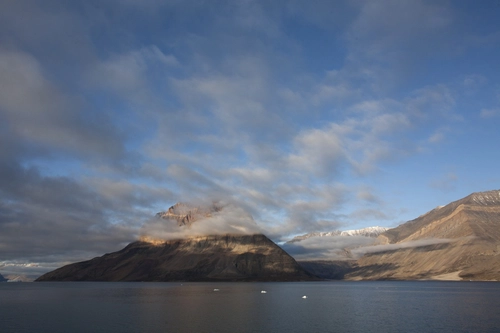
East and South Greenland Explorer, Incl. flight from Narsarsuaq to Copenhagen
 21 Days / 20 Nights
21 Days / 20 Nights

Spitsbergen - Northeast Greenland - Aurora Borealis, Including Long Hikes
 14 Days / 13 Nights
14 Days / 13 Nights
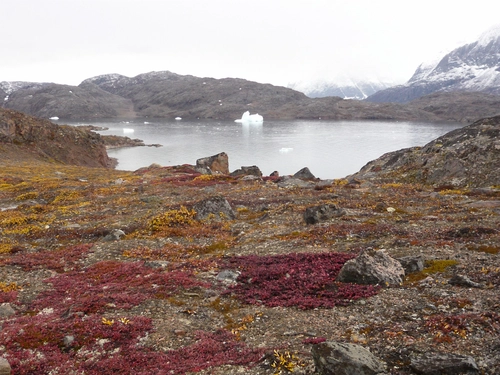
East Greenland, Scoresby Sund - Aurora Borealis, Including Long Hikes
 10 Days / 9 Nights
10 Days / 9 Nights
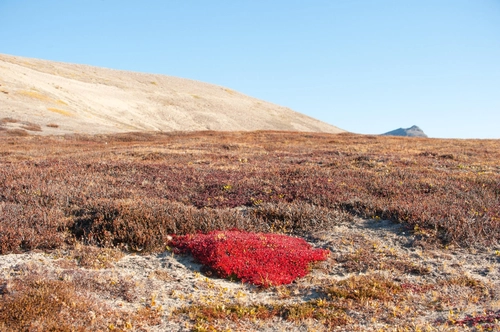
South Greenland Explorer, Aurora Borealis, Incl. flight from Copenhagen to Narsarsuaq
 10 Days / 9 Nights
10 Days / 9 Nights
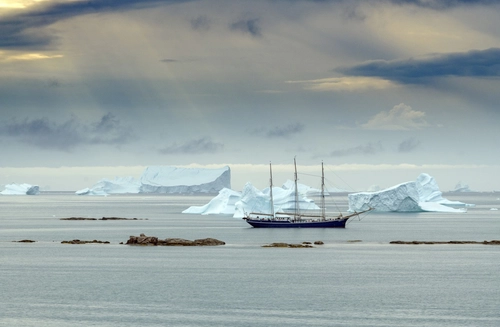
East Greenland - Scoresby Sund - Iceland, Aurora Borealis, Fly & Sail
 12 Days / 11 Nights
12 Days / 11 Nights
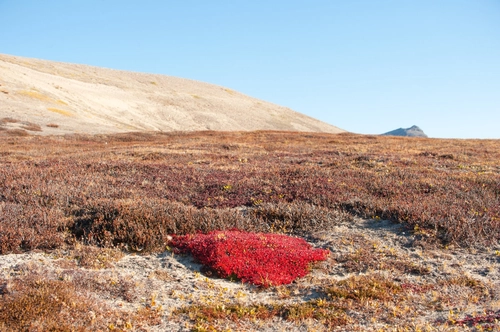
Northeast Greenland Solar Eclipse Explorer Voyage
 14 Days / 13 Nights
14 Days / 13 Nights
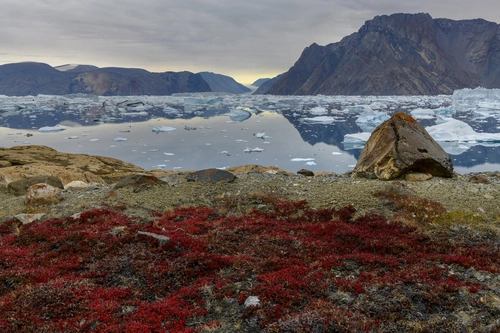
Spitsbergen - Northeast Greenland, Fly & Sail
 20 Days / 19 Nights
20 Days / 19 Nights

Northeast Greenland Extreme
 14 Days / 13 Nights
14 Days / 13 Nights

East Greenland, Scoresby Sund, Including Long Hikes
 10 Days / 9 Nights
10 Days / 9 Nights

East & South Greenland Explorer – Aurora Borealis
 15 Days / 14 Nights
15 Days / 14 Nights
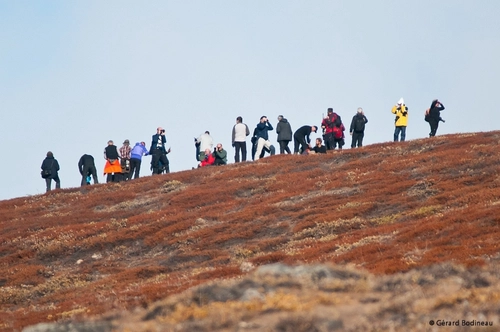
East Greenland, Scoresby Sund - Aurora Borealis, Fly & Sail
 11 Days / 10 Nights
11 Days / 10 Nights
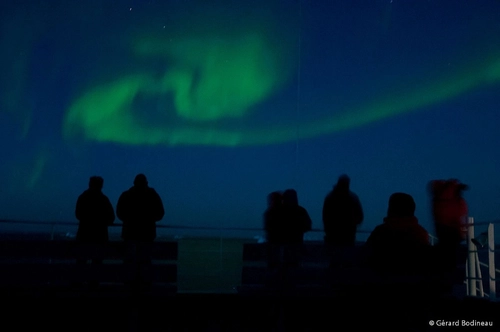
Northeast Greenland Extreme - Aurora Borealis
 14 Days / 13 Nights
14 Days / 13 Nights

South Greenland Explorer – Aurora Borealis
 10 Days / 9 Nights
10 Days / 9 Nights
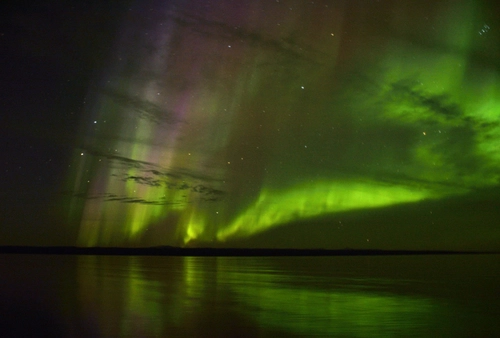
East Greenland, Scoresby Sund - Iceland , Aurora Borealis, Fly & Sail
 12 Days / 11 Nights
12 Days / 11 Nights
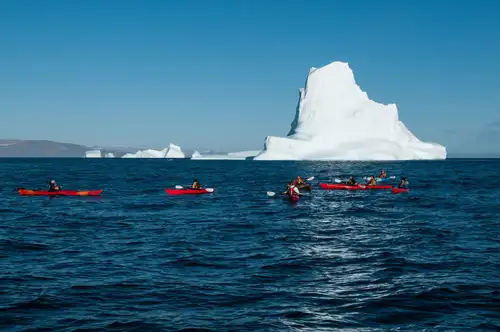
Kayaking In Greenland
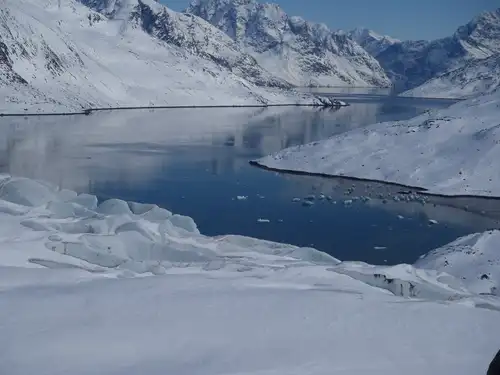
8 Scientific Wonders of the Arctic

Arctic Foxes: Constant Gardeners of the Arctic
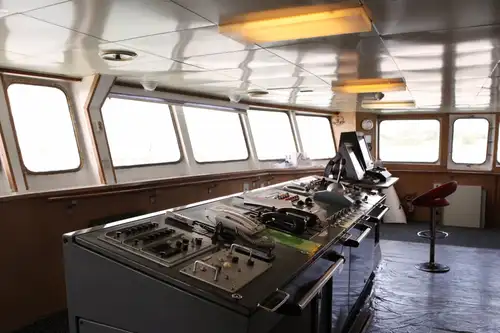
Navigating by touch through the sea ice

The Arctic’s Most Phenomenal Fjords
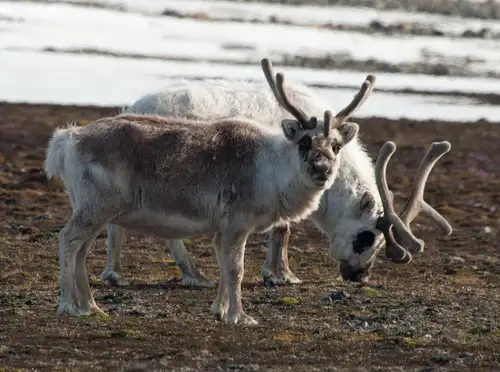
Amphibian, reptiles and herbivore mammals in the Arctic
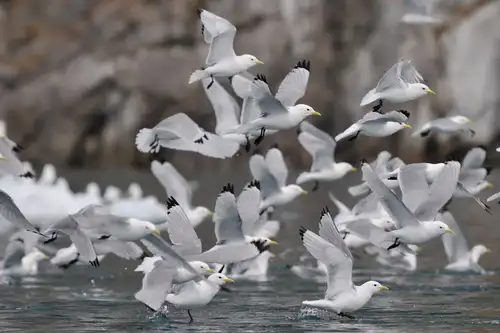
Five Birds You Might See on Your Greenland Cruise
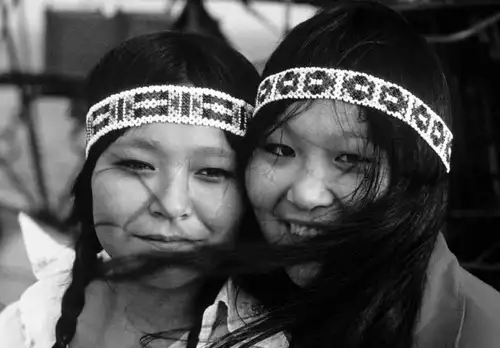
Traditional Lifestyles of the Inuit
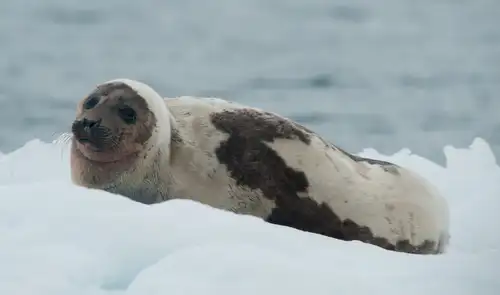
Harp seals harping on in Greenland
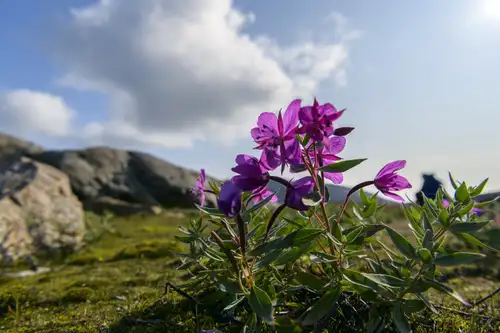
Arctic Flowers, Trees, and Other Plant Life
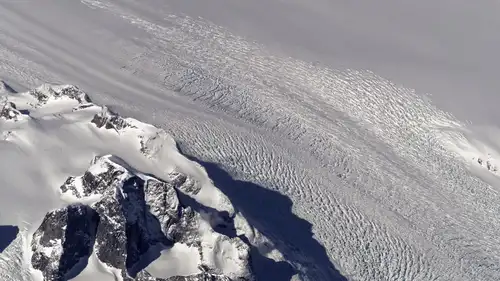
Ice streams and lakes under the Greenland Ice Sheet
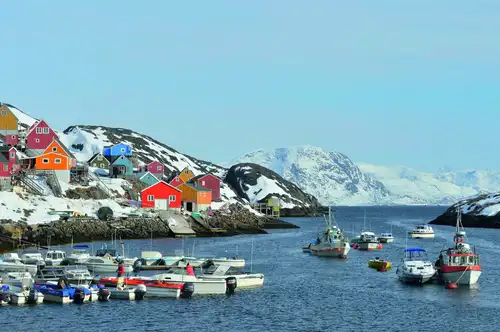
Amazing Greenland
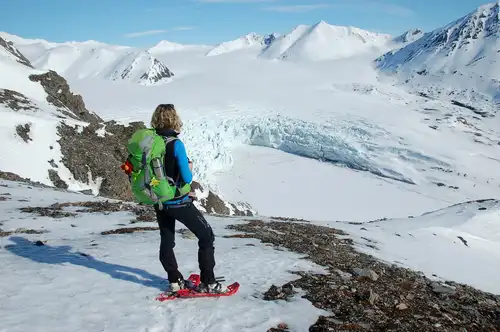
Arctic on Foot: Hiking and Snowshoeing the Far North

The World Is Changing for Greenland's Native Inuit People
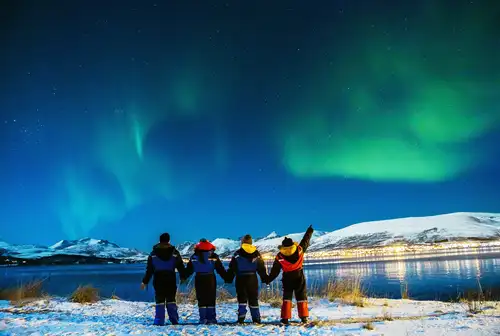
10 Tips for Photographing the Northern Lights
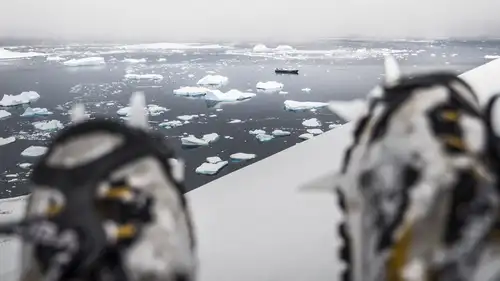
Arctic and Antarctic Basecamp Cruises – Choose Your Own Adventure

The Arctic Hare: Easter Bunny
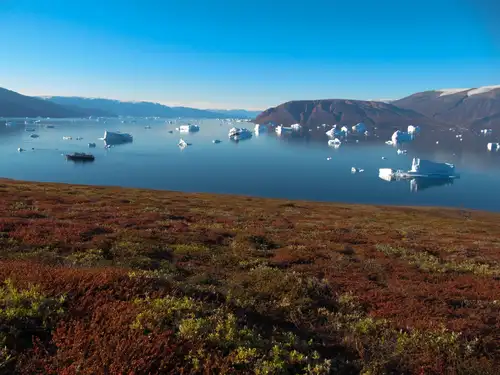
Northeast Greenland National Park
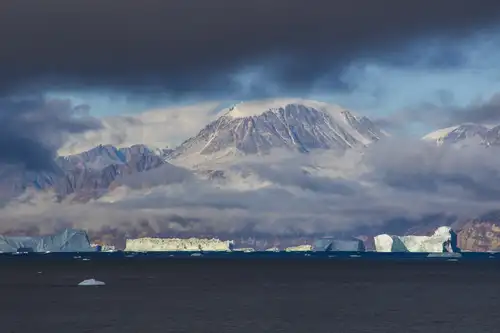
Greenland: East vs. West
